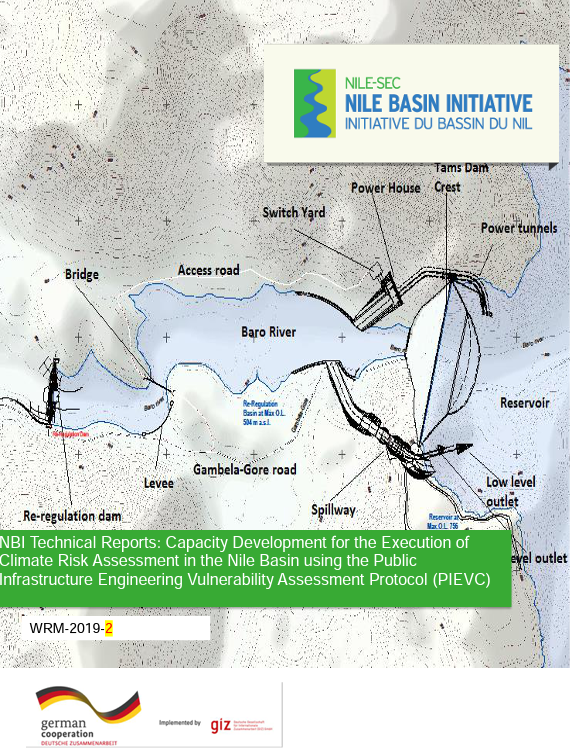Article /
Capacity Development for the Execution of Climate Risk Assessment in the Nile Basin using the Public Infrastructure Engineering Vulnerability Assessment Protocol (PIEVC)

Summary
This resource was submitted by the Climate Risk Institute for use by the CanAdapt Climate Change Adaptation Community of Practice.
This article is an abridged version of the original text, which can be downloaded from the right-hand column. Please access the original text for more detail, research purposes, full references, or to quote text.
This report provides climate risk assessment of Borenga Multipurpose Dam which is found in Equatorial Nile region of the Nile River Basin. Future climate change is expected to potentially affect water infrastructure in the Nile Basin. Hence climate vulnerability assessment was carried out using the Public Infrastructure Engineering Vulnerability Committee (PIEVC) protocol. The PIEVC engineering protocol is a step-by-step process to conduct an engineering vulnerability assessment on infrastructure due to climate change. The PIEVC protocol is derived from standard risk management methodologies tailoring climate change vulnerability and it has been applied in more than fifty (50) vulnerability assessments to date. The PIEVC Protocol involves five (5) steps namely project description, data gathering and sufficiency, risk assessment, engineering analysis and conclusions and recommendations.
The climate vulnerability assessment show that Borenga Multipurpose dam is expected to withstand future climate events. The main dam structure is determined to withstand future flood conditions as result of climate change. However, the dams will be highly vulnerable to the effects of climate change during construction period. Temporary structures such as cofferdams and diversion channels which are used during the construction of the main dam are usually designed with low return period and constructed with cheap available materials. The assessment determined that probability of occurrence flood events will increase in the future and these temporary structures can collapse and the construction of the dams can be affected. The assessment ascertains that Borenga Dam will be affected by future climate change. The effect will be on spill way components such as radial gates and stilling basins. The assessment investigated the reservoirs of Borenga Dam and the hydropower and irrigation functions of the reservoir. It found out that the reservoir and the functions of the Dams will not be significantly affected, and the risk of climate change is very low.
As indicated above Borenga Multipurpose dams are vulnerable during the construction period. Hence the main recommendation provided by the assessment team is to design coffer dams for longer return period considering climate change, check the current coffer dams and diversion 9 structures against project climate and consider other diversion methods during final design of these infrastructure.
The report also investigates the fact that the vulnerability assessment conducted has limitations. Some of the limitations include: the use of limited climate model data for future climate projection, the uncertainty in the assessment of the likelihood and magnitude of climateinfrastructure interactions and the difficulty in converting hydrological information to a form that could be applied to the PIEVC.
Suggested Citation:
NBI Technical Reports- WRM 2019-12 Capacity Development for the Execution of Climate Risk Assessment in the Nile Basin using the Public Infrastructure Engineering Vulnerability Assessment Protocol (PIEVC), 2019.
Related Reading:
- Nile Equatorial Lakes Subsidiary Action Program (NELSAP)
- Backgrounder: Applying a Climate Lens to Infrastructure Projects
- Climate Service Action Plan for the Nile Initiative (NBI CSAP)
- Climate Services for Infrastructure Baseline Assessment Report for the Nile Basin Countries
- The climate change, migration and economic development nexus in North Africa: An overview
